Transmission Control Module
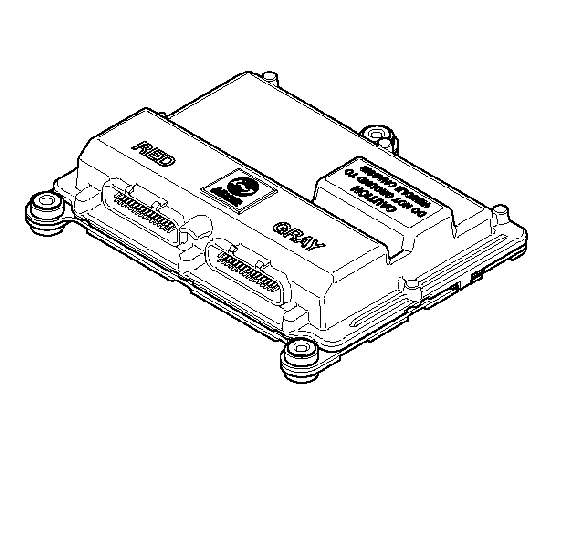
A microcomputer controls the transmission by receiving and processing signals from various switches and sensors. The microcomputer determines shift sequences, shift timing, and clutch apply and release characteristics. The microcomputer is an independent controller and is referred to as a transmission control module (TCM). The TCM is available in 12 volt configurations to match the configuration of the vehicle electrical system. The pressure switch manifold (PSM) and the park/neutral position (PNP) switch provide operator input to the TCM. Other data sent to the TCM include throttle position, engine, turbine, and output speeds, and sump temperature. Any active special function, such as anti-lock brakes or power take-off, is also an input to the TCM. The TCM processes this data to determine proper shift points, to monitor the current range, to perform ratio tests, and to compile diagnostic data. The TCM is programmed to protect the transmission and other vehicle driveline components by inhibiting actions, such as full-throttle NEUTRAL-to-range shifts and high speed direction changes. The TCM determines if a system malfunction exists and stores diagnostic codes related to the malfunction. The codes, accessed by the service mechanic, are used in diagnosing persistent or intermittent trouble in the system.
Throttle Position/Torque Management
The TCM receives input on throttle position/torque management, from a signal transmitted by the engine electronic controls.
The engine electronic controls communicate directly to the transmission electronic controls over an SAE J1850 or J1939 serial communication interface (SCI) data link. The transmission TCM must be calibrated to receive these signals.
Speed Sensors
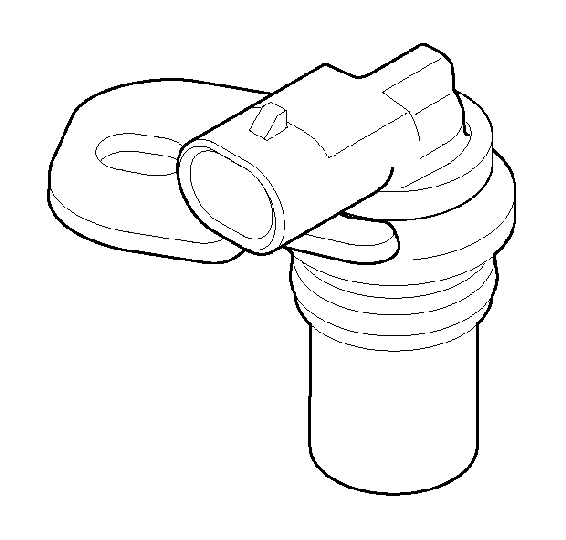
Important: Do not rotate the sensor in the retaining bracket. Changing the sensor/bracket orientation may cause improper operation.
There are three speed sensors typically required for use with 1000 Series transmissions. They include the engine speed sensor, the turbine speed sensor, and the output speed sensor. The speed sensors provide RPM information to the TCM. The speed ratios between the various sensors allow the TCM to determine the transmission operating range. Speed sensor information is also used to control the timing of clutch apply pressures, resulting in the best possible shift quality. Hydraulic conditions are detected by comparing the speed sensor information, for the current range, to the range of the speed sensor information stored in TCM memory. The speed sensors are variable reluctance devices that convert mechanical motion to an AC voltage. Each sensor consists of a wire coil wrapped around a pole piece that is adjacent to a permanent magnet. These elements are contained in a housing that is mounted adjacent to a rotating ferrous member.
Shift Selector
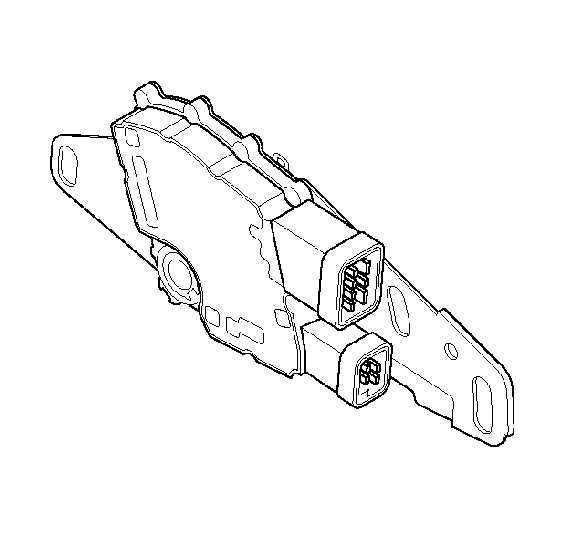
The vehicle is equipped with a column type shift selector. In addition to the column shifter, another component associated with the shift selector is the park/neutral position (PNP) switch mounted on the selector shaft. The PNP switch transmits selector position information to the TCM. The PNP switch mounts directly onto the transmission housing, from the outside, and detects the angular position of the shift selector shaft. This position is communicated to the TCM so that certain vehicle control functions can be coordinated with the position of the shift controls. The PNP switch has redundant circuitry to alert the TCM in the event of a single wire or switch failure. The neutral signal output of the PNP switch is typically used as confirmation that the transmission is in NEUTRAL before the engine starter is engaged. The PNP switch is interfaced to the starter circuit with weatherproof electrical connectors. The reverse signal provision may be used to activate the vehicle back-up lights and/or reverse warning devices. The shift selector and PNP switch are customer supplied.
The operator chooses the transmission range by moving the selector lever to the appropriate gate position. When properly adjusted, the shifter gates prevent inadvertent shifting between ranges, and correspond to the internal transmission detent positions. A positive detent is provided in the transmission in order to maintain the selector shaft in the selected position.
The TCM shift calibration determines the available forward ranges for each selector position. Although specific installations vary, typical selector positions for the 1000 Series include the following:
P - PARK: The parking pawl is engaged. The transmission is in NEUTRAL. NEUTRAL is not available on all shift selectors. When available, it may be used when starting the engine and for stationary operations.R - REVERSE: REVERSE is selected in order to move the vehicle backward.
N - NEUTRAL: NEUTRAL may be used when starting the engine and for stationary operations. The TCM disables the starter switch if a range other than NEUTRAL or PARK is selected before starting the vehicle.
D - DRIVE: DRIVE is the highest forward range used for normal driving. The transmission shifts to first range for starting, then automatically upshifts through the ranges, as operating conditions permit, until the highest range is attained.
4, 3, 2, 1 - Forward Range: There are four forward range selector positions. The first position after NEUTRAL is DRIVE, where all five forward ranges are available. Another position is FIRST range hold. There are three choices for the next two positions. These choices are 1-4, 1-3, and 1-2, which describe the ranges available in that position. The vehicle manufacturer chooses the two positions that best fit the vocation for which the vehicle is intended.
Internal Components
Several components of the 1000 Series electrical control system are located within the transmission, as part of the main control valve body. These components include three types of solenoids for controlling the hydraulic action of the valves. They include the pressure switch manifold and an internal wiring harness that links the internal components with the TCM.
Solenoids
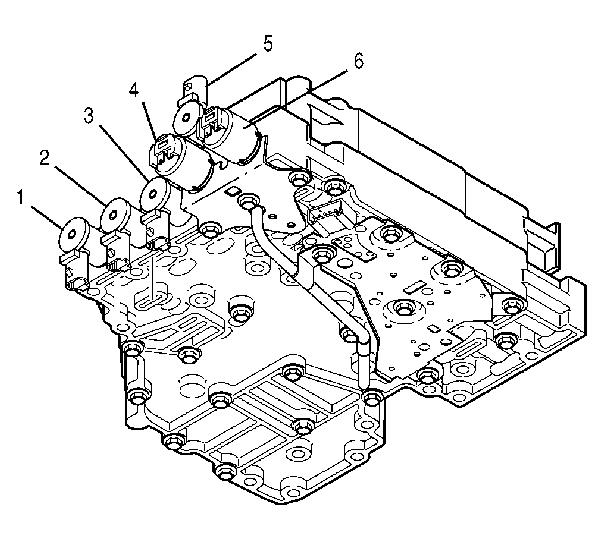
The 1000 Series control valve body contains both normally closed (N/C) and normally open (N/O) solenoids. A N/C solenoid remains closed until a signal from the TCM energizes the solenoid. A N/O solenoid remains open until the TCM energizes the solenoid. When a solenoid valve is in the closed position, the valve blocks the flow. When a solenoid valve is in the open position, flow is permitted through the valve. The pulse width modulated F solenoid (1) and the ON/OFF shift valve solenoids, C (5), D (2), and E (3) are N/C. Both solenoid types have an orifice, electrical windings, an iron core, and a steel check ball.
The solenoids used in the 1000 Series differ in their ability to control flow or fluid pressure. The solenoids may operate in the open or closed state with no modulation capability, C, D, and E solenoids, an intermediate flow and resultant pressure based on duty cycle, F solenoid, or produce pressure proportional to current (PPC), A and B solenoids.
Shift solenoids C, D, and E provide the necessary logic to distribute fluid to the correct clutches. The shift solenoids provide either full control main pressure or exhaust to the head of each of the corresponding shift valves C, D, and E. Since the valve states, stroked or unstroked, are critical to providing the correct transmission range, each shift valve has a pressure switch, located in the pressure switch manifold, which provides feedback to the computer as to the position of the valve.
Trim Solenoids A (6) and B (5) are used to control on-coming, off-going, and holding pressure to the five clutches. These solenoids are referred to as PPC solenoids, since the output hydraulic pressure supplied by these solenoids is proportional to the controlled current command.
Pressure Switch Manifold
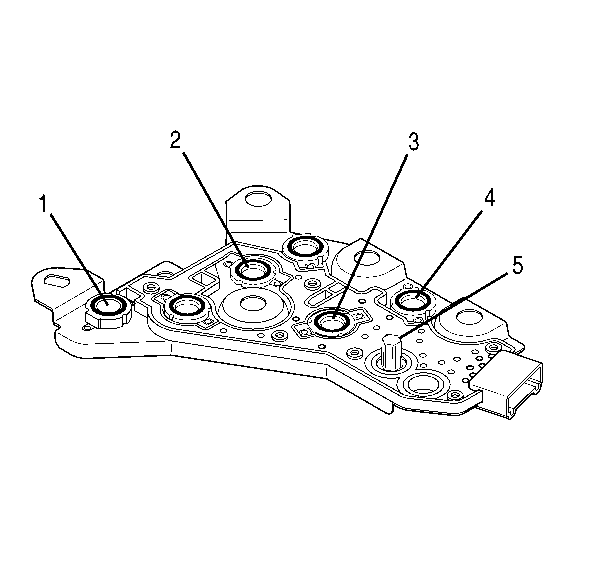
The pressure switch manifold (PSM) is a multiple-switch assembly made up of three N/O pressure switches and one N/C pressure switch. N/O pressure switches (4, 3 and 2) correspond to shift valves C, D and E. Fluid pressures are fed from shift valves C, D, and E, to the manual selector valve and to the pressure switches based on the positions of the valves and shift selector. The shift valve fluid pressures reflect the logic condition at the corresponding solenoids. This logic indicates the current transmission operating range to the TCM.
The three fluid pressure switches corresponding to the shift valves are N/O, contacts not touching, when no fluid pressure is present, so that electrical current is stopped at the switch. When fluid pressure is routed to the switch, it moves the diaphragm and upper contact so that the contact element touches both the positive and ground contacts. This closes the circuit and allows current to flow from the positive contact and through the switch.
The pressure switch (1) corresponding to REVERSE is N/C, since fluid pressure is always present unless the selector valve is moved to REVERSE. The PSM also contains a temperature sensor thermistor (5) for sump temperature. Changes in sump fluid temperature are indicated by changes in sensor resistance. Increasing temperature causes decreased sensor resistance. The resistance value is then relayed to the TCM as an input for shift control.
Internal Wiring Harness
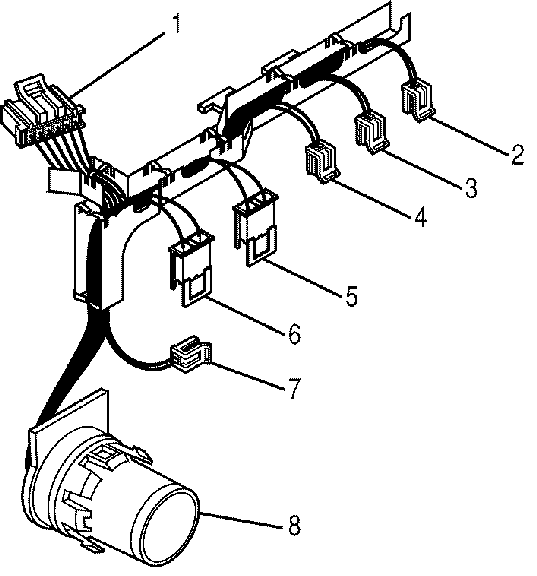
The internal wiring harness has connectors (7, 3 and 4) for the shift solenoids C, D and E. Connectors 6 and 5 go to clutch trim solenoids A and B. Connector 2 goes to the torque converter clutch solenoid F. There is also a connector (1) for the pressure switch manifold. All of these connectors go to the main electrical connector (8). The transmission main electrical connector transports signals from these connectors to the TCM via the external harness.
